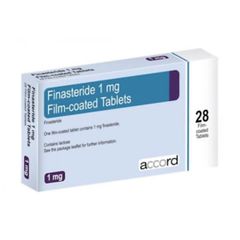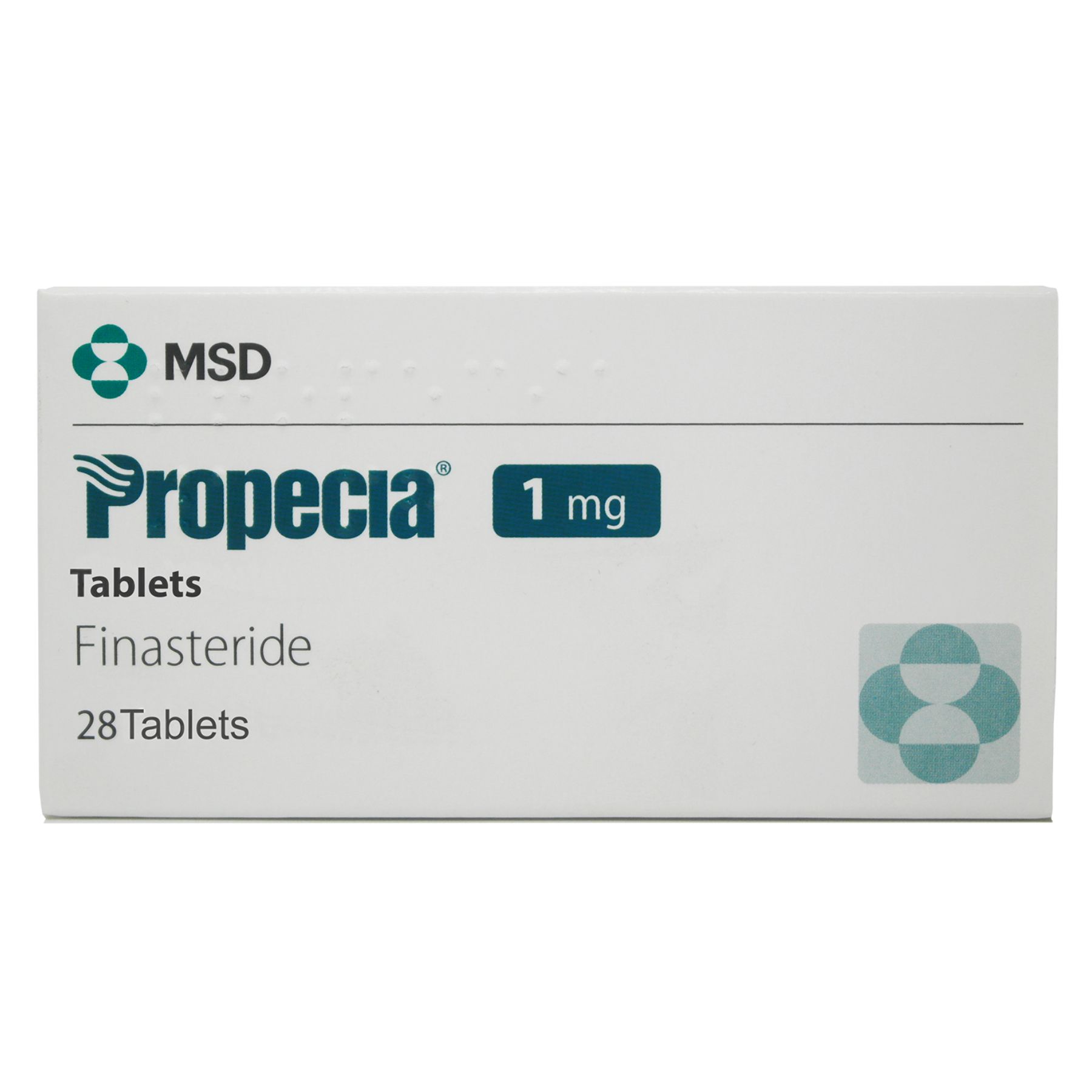- Home
- Treatments (Medications)
- Hair Loss
Hair Loss
Hair Loss affects both men and women and can impact self-esteem. Clinically proven hair loss treatments are prescribed through Chemist Doctor after assessment by UK doctors. Our solutions can slow hair thinning and promote regrowth.
Find Hair Loss Treatments

Finasteride Tablets

Propecia Tablets

Regaine Tablets
Diagnosing Hair Loss: Clinical Methods
While male-pattern baldness often shows distinct progression (Norwood Scale stages II-VII), differential diagnosis is crucial:
Three-Point Assessment
- Family History: 79% heritability in androgenetic alopecia (Journal of Investigative Dermatology)
- Trichoscopy: Microscopic examination of hair density (≥200 hairs/cm² normal)
- Blood Tests: Check ferritin (≥50μg/L optimal), TSH, and testosterone levels
GP consultations include scalp biopsies for ambiguous cases, particularly when suspecting alopecia areata (NHS, 2023).
Hair Loss Treatment Options
First-line therapies approved by NICE:
| Treatment | Mechanism | Efficacy | Regimen |
|---|---|---|---|
| Finasteride 1mg | 5α-reductase inhibitor (blocks DHT conversion) | 83% scalp coverage at 2 years | 1 tablet daily |
| Minoxidil 5% | Vasodilator (prolongs anagen phase) | 45% regrowth at 6 months | 1ml twice daily |
Treatment Protocols
- Month 1-3: Shedding phase (telogen effluvium)
- Month 4-6: Visible regrowth (vellus → terminal hairs)
- Month 12+: Maintenance phase
Note: Discontinuation leads to reversal of benefits within 9-12 months.
Hair Loss Prevention Strategies
Nutritional Support
- Biotin 5000μg daily (strengthens keratin)
- Zinc 15mg (supports follicle function)
Scalp Care
- Gentle cleansing (pH 5.5 shampoos)
- Weekly 5-minute massage (increases blood flow 22%)
"Patients using combination therapy (finasteride + minoxidil) show 146% better outcomes than monotherapy." - International Journal of Trichology
Alternative Hair Loss Approaches
While popular, these show limited clinical evidence:
Evidence Status
- Low-Level Laser Therapy: FDA-cleared, 510(k) K091515 (minimal efficacy)
- Saw Palmetto: 38% DHT reduction vs placebo (Journal of Alternative Medicine)
- Acupuncture: No significant improvement in RCTs
Hair transplants show 85% graft survival when performed by FUE method (NHS guidelines).
Proper hair loss management requires accurate diagnosis and evidence-based interventions. Over 87% of cases respond to early treatment according to British Association of Dermatologists data.
Diagnosing Hair Loss: Clinical Methods
While male-pattern baldness often shows distinct progression (Norwood Scale stages II-VII), differential diagnosis is crucial:
Three-Point Assessment
- Family History: 79% heritability in androgenetic alopecia (Journal of Investigative Dermatology)
- Trichoscopy: Microscopic examination of hair density (≥200 hairs/cm² normal)
- Blood Tests: Check ferritin (≥50μg/L optimal), TSH, and testosterone levels
GP consultations include scalp biopsies for ambiguous cases, particularly when suspecting alopecia areata (NHS, 2023).
Hair Loss Treatment Options
First-line therapies approved by NICE:
| Treatment | Mechanism | Efficacy | Regimen |
|---|---|---|---|
| Finasteride 1mg | 5α-reductase inhibitor (blocks DHT conversion) | 83% scalp coverage at 2 years | 1 tablet daily |
| Minoxidil 5% | Vasodilator (prolongs anagen phase) | 45% regrowth at 6 months | 1ml twice daily |
Treatment Protocols
- Month 1-3: Shedding phase (telogen effluvium)
- Month 4-6: Visible regrowth (vellus → terminal hairs)
- Month 12+: Maintenance phase
Note: Discontinuation leads to reversal of benefits within 9-12 months.
Hair Loss Prevention Strategies
Nutritional Support
- Biotin 5000μg daily (strengthens keratin)
- Zinc 15mg (supports follicle function)
Scalp Care
- Gentle cleansing (pH 5.5 shampoos)
- Weekly 5-minute massage (increases blood flow 22%)
"Patients using combination therapy (finasteride + minoxidil) show 146% better outcomes than monotherapy." - International Journal of Trichology
Alternative Hair Loss Approaches
While popular, these show limited clinical evidence:
Evidence Status
- Low-Level Laser Therapy: FDA-cleared, 510(k) K091515 (minimal efficacy)
- Saw Palmetto: 38% DHT reduction vs placebo (Journal of Alternative Medicine)
- Acupuncture: No significant improvement in RCTs
Hair transplants show 85% graft survival when performed by FUE method (NHS guidelines).
Where Can I Buy Hair Loss Treatment Online in the UK
Secure Hair Loss Prescription & Next-Day Delivery Service
Order hair loss treatment with confidence through our UK-registered medical prescribers, who review all requests within 4 working hours. We guarantee same-day prescription approval for eligible patients and dispatch orders placed before 3pm for next-day tracked delivery.
Our hair loss service combines competitive pricing with strict adherence to MHRA safety standards, ensuring your medication is dispensed through GPhC-registered pharmacies. Every purchase includes discreet packaging and a GDPR-compliant consultation process.
Our clinical team ensures:
- Full medical history review
- Drug interaction checks
- Ongoing safety monitoring
Always consult your GP for first-time symptoms or complex medical history.
Hair Loss FAQs
What are the stages of male pattern baldness?
Male pattern baldness progresses through three main stages according to the Norwood Scale:
Early Stage (Norwood 1-2)
- Mild recession at the temples forming an "M" shape
- Subtle thinning at the crown area
- Hair begins to feel finer in affected zones
Moderate Stage (Norwood 3-4)
- More pronounced temple recession
- Visible bald spot developing at the crown
- Thinning becomes noticeable around the part line
Advanced Stage (Norwood 5-7)
- Significant hair loss with only side hair remaining
- Large bald areas merging between front and crown
- Possible complete recession to mid or back of scalp
How does female pattern hair loss progress?
Female hair loss follows the Ludwig Scale with these characteristic stages:
Minimal Thinning (Ludwig I)
- Slight widening of the centre part
- Reduced volume most noticeable when styling
- No significant frontal hairline changes
Moderate Thinning (Ludwig II)
- Clearly visible scalp through thinning hair
- Noticeable decrease in ponytail thickness
- Possible mild temple recession
Severe Thinning (Ludwig III)
- Extensive thinning across the entire scalp
- Very sparse hair coverage with visible scalp
- Frontal hairline typically remains intact
Where can I obtain hair loss treatments?
Hair loss treatments are available through:
- Online pharmacies like Chemist Doctor (offering both OTC products and prescription medications after consultation)
- Private dermatologists or hair specialists
- GP prescriptions (though NHS typically doesn't cover androgenetic alopecia treatments)
Our online consultation takes about 5 minutes, with same-day dispatch for approved prescriptions.
What treatment options exist for hair loss?
Available treatments include:
- Topical solutions: Minoxidil (foam or liquid), medicated shampoos
- Oral medications: Finasteride (for men), Dutasteride
- Combination therapies: Using multiple treatments together for enhanced results
- Surgical options: Hair transplants (after medical therapy evaluation)
- Non-surgical solutions: High-quality hair systems for advanced cases
Am I suitable for prescription hair loss treatments?
Suitability depends on several factors:
- Finasteride: Typically for men over 18 with male pattern baldness and no liver conditions
- Minoxidil: Suitable for both men and women with early to moderate hair loss
- All candidates require medical assessment to ensure safety and appropriateness
How long until I see results from hair loss treatments?
Treatment timelines vary but generally:
- Initial shedding may occur in the first 4-8 weeks (a positive sign)
- Visible improvements typically appear after 6 months
- Full results may take 12-18 months of consistent use
- Continued treatment is necessary to maintain results
Why try medications before considering hair transplants?
Medication first approach is recommended because:
- Drugs can stabilise hair loss and sometimes regrow hair without surgery
- They address the underlying cause of pattern baldness
- Medications are less invasive and more affordable than surgery
- 12-18 months of medical therapy helps assess your response
- Good medical control improves potential transplant results
What options exist for severe hair loss unresponsive to medication?
Advanced solutions include:
- Modern hair systems: High-quality, natural-looking wigs using medical-grade materials
- Specialist clinics: Offering custom colour/texture matching and professional fitting
- Partial coverage options: For those with specific pattern hair loss
- These provide immediate results without surgical recovery time
 | Authored by Nabeel |
Medical Content Manager
Nabeel is a co-founder, and medical content manager of Chemist Doctor. He works closely with our medical team to ensure the information is accurate and up-to-date.
 | Reviewed by Dr. Waqas (GMC:7928708) |
Medical Doctor
Dr. Waqas is a GMC-registered doctor at Chemist Doctor, specialising in general health. He balances clinical precision with cultural sensitivity.
 | Approved by Usman |
Medical Director
Usman is a co-founder, and medical director of Chemist Doctor. He leads the organisation's strategic vision, bridging clinical and operational priorities.
Review Date: 15 May 2025
Next Review: 21 December 2025
Published on: 15 May 2025
Last Updated: 16 May 2025







